
Review on Silver Kaito KA1103 - High-Performance Worldband Radio by Marcus Akram

KA1103 is the second cousin of the Grundig G5
It is little known that the KA1103 and the Grundig G5 share the same motherboard and this is evident even without disassembly. The button, switch, dial and socket are all the same, even the back of the KA1103 is made of the same mold. If you own or have owned a G5, aside from the completely different user interface, you know exactly how the KA1103 will fare in terms of sensitivity and selectivity on all bands. The G5 was a great performer in many ways, if you're lucky enough to get a good one. Due to quality control issues and the notorious failure rate due to minor static discharge, many of them became unusable within the first year of ownership. I have two G5s, one of which is still working perfectly and the other has lost all audio output to the speaker and headphone jack (and for no apparent reason). Luckily, Kaito has taken the positive performance aspects of the G5 and incorporated them into the KA1103, while improving quality control and reducing unnecessary glitches. There are clear functional changes between both radios. Some are good, some bad, and some can be overcome with a little effort, which I'll get to later. Performance: Like the G5, the KA1103 is an excellent receiver that will be appreciated by FM and MW DX enthusiasts alike. In my opinion, there is no other wearable in this class that can compete with it. Here I dare to say that the KA1103 out of the box and without an external loop is "almost" almost as sensitive to MW as the legendary Panasonic RF2200. Blasphemy? Of course. There is no comparison between them. SW is good to excellent with very stable SSB reception, enough to decode RTTY, CW or weather fax on your computer with the right software. It handles large external antennas fairly well with little front-end overdrive, and the DX/Local attenuator mostly fixes any problems. The tight filter does a great job of reducing ambient noise, but at the cost of some sound quality, which is to be expected. As with the G5, I did notice some AGC clipping or distortion when listening to strong AM and SSB signals, but this is mostly audible through headphones. One of the main improvements of the KA1103 over the G5 is the reduction of internal noise and spurious signals in the MW band, probably due to better shielding or LCD or CPU design. The frequency accuracy in the KA1103 is perfect and well calibrated, even the BFO is well balanced and centered. My G5 suffers from being 1kHz off center, quality control again. Ergonomics: The KA1103 is a completely different usability beast compared to the G5 and there is a learning curve compared to other radios. The hybrid A/D display is primarily a novelty and wastes a lot of space that could be better used for a higher-frequency display and a logical numeric keypad. Although I liked that, I quickly see which SW area I am hiring. The G5 didn't indicate what meter band you were in and even if you turned it off with the band selector it remembered the last frequency used and you'd have to refer to the SW table on the back of the radio. Once you reach the top or bottom of the SW metering range on the KA1103, it will revert to the top or bottom. Tuning bands is done by manually entering the frequency and then using the tuning knob, from there you can scan for bands at your convenience. The volume control on the KA1103 is very awkward, there is no dedicated volume control like the G5. You need to press the VOL/CHG button and then use the tuning dial to make adjustments. It takes some getting used to, but it's still a silly design. However, compared to the G5, it does better than linear digital volume. The G5 has 20 rough volume levels, while the KA1103 only has 64. That means you'll feel more comfortable listening through headphones with the KA1103. The memory system is a step backwards from the KA1103, but that's okay, it uses hex displays for channels 1 through 9. The G5 was more intuitive and memories could be labeled in plain English, if a little crude. The signal strength indicator on the KA1103 is very small and difficult to read. Due to the contrast of the screen, it can only be seen from the EXACT angle, otherwise you won't even notice. The LCD backlight is adequate, with the KA1103 using dim orange LEDs as opposed to the bright, cool blue LEDs in the G5. Another improvement to the KA1103 is the ability to completely turn off the watch face backlight if needed or to conserve battery power. There is a switch on the right to control this. The G5's backlight is always on when you press a button or turn the dial. Button operation is identical on both radios, tuning is locked in 1kHz increments, which is great for fine-tuning, but it's a chore without resorting to a keypad or memory. A fast/slow setting would be very helpful. Both radios adjust smoothly, with no chugging and no dial locking, making them great for tape scanning. Construction and Miscellaneous: As previously mentioned, the KA1103 and G5 are physically identical in size and dimensions. The G5 used a rubberized coating on the case, which was great at first, but over time it became sticky or sticky and I couldn't find a way to fix it. The KA1103 doesn't use this coating, which is a welcome omission. Both radios are well weighted, solidly built and well balanced in the hand. Upon closer inspection, the KA1103 appears to have a metal speaker grille that has been carefully incorporated into the plastic paint. I did notice a tiny dent when I first used the radio but nothing that warrants a refund or exchange as you really have to look for it. A major advantage of the G5 over the KA1103 was the ability to use the external antenna jack on all bands, including MW. After you put the antenna into the inner ferrite rod, it turned off completely. This is a desirable operation for MW DXers and is very difficult to find on radios. Stock antenna connector KA1103 only works with FM and SW, but did you know it can be made to work differently? Here's the trick: manually tune in a frequency outside of the MW band using the keyboard, it should end in 1 or 9. Let's take 1719 kHz for example. 1-7-1-9, and then press Band+. Then press and hold "Band-" for three seconds to start auto-search down. Once it reaches a frequency in the AM band (e.g. 1600kHz), rotate the Tuning control to stop scanning. That's all! The ferrite rod is off, the antenna port is active, along with the telescoping rod and the added bonus of being able to tune into the VLF band. One way to access this trick easily and without having to follow the above steps all the time is to manually tune some frequencies ONLY with the tuning knob after doing the above steps and save them. I chose 150 kHz, 520 kHz and 1700 kHz. This allows me to easily switch between LW and MW. To quickly return to the inner ferrite bar, simply enter the MW frequency as usual and then press the "Band+" button. Despite the quirky ergonomics, the KA1103 is an excellent radio. If you are an avid MW or FM DX fan this is the radio for you. If you're serious about shortwave listening, or looking to upgrade at a reasonable price, this is hard to beat. In the vast sea of multi-band radios available primarily from Tecsun, Kaito and Degen, it's easy to see why the KA1103 is still in production.
- Built-in automatic charger and flip-up battery cover
- No paint required
New products
Top products in Radios

Tecsun PL398MP DSP Digital AM/FM/LW Shortwave Radio: Dual Speakers & MP3 Player, Black - The Ultimate Audio Solution

26 Review
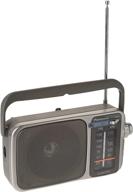
Panasonic RF 2400 AM Radio Silver

23 Review

Perfeo Huntsman FM radio red

57 Review
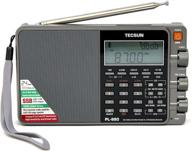
Tecsun PL880 Portable Digital PLL Dual Conversion AM/FM, Longwave & Shortwave Radio with SSB (Single Side Band) Reception - Silver

14 Review
Another interesting products

Experience Nostalgic Music With KEiiD CD Player Retro Home Boombox: Get The Used-Like New Version For Just $99

17 Review
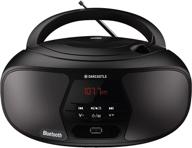
🎵 Oakcastle BX200 Boombox, Portable CD Player and FM Radio with Bluetooth Stereo Speakers and Multi-Connection Capability

9 Review
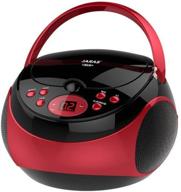
🎧 Jaras JJ-Box89: Red/Black Sport Portable Stereo CD Player with AM/FM Radio & Headphone Jack Plug - Ultimate Music Companion on the Go!

10 Review
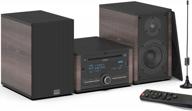
KEiiD Bluetooth Stereo Shelf System With Retro CD Player, Speakers, FM Radio Receiver, USB, AUX, Bass/Treble EQ, Wooden CD Music Bookshelf System For Home Audio

28 Review


